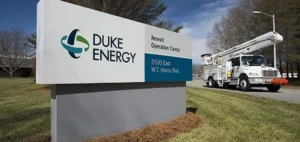Wood Mackenzie’s report “The Nuclear Option: Making New Nuclear Power Viable in the Energy Transition” highlights the major economic challenge facing the adoption of the remaining nuclear and small modular reactors (SMRs): cost. Despite growing political support and increasing demand in the decarbonized energy market, nuclear faces fierce competition from technologies such as hydrogen combustion, gas or coal with carbon capture and storage, geothermal, and long-term energy storage.
According to David Brown, director of energy transition at Wood Mackenzie and lead author of the report, the nuclear industry must quickly address the cost challenge to take advantage of the huge growth opportunity offered by low-carbon energy. Current nuclear costs are simply too high to allow for rapid expansion. Wood Mackenzie’s figures show that the levelized cost of conventional nuclear electricity is at least four times that of wind and solar.
SMRs, a promising solution
To overcome these cost issues, small modular reactors (SMRs) are seen as a promising solution. SMRs are designed to be modular, factory-assembled and scalable, which should reduce construction and deployment costs. If SMR costs drop to $120 per megawatt hour (MWh) by 2030, they can compete with other forms of low-carbon power generation in some parts of the world.
However, the expansion of RMS remains limited for the time being. High costs hinder their deployment and construction times are longer than for large-scale reactors. Wood Mackenzie estimates that only six SMR projects will be built between 2023 and 2030, with capacities ranging from 80 MW to about 450 MW. To support lower costs, 10 to 15 projects with a total capacity of 3,000 to 4,500 MW would be needed between 2030 and 2040.
Four key aspects
The report also highlights four key areas that require attention for nuclear expansion. First, governments must establish clear rules for planning, licensing, regulation and safety. Second, it is essential to expand the uranium supply chain to meet the growing demand. In addition, developers need to strengthen their skills in building SMRs and focus on a few technologies rather than a wide range of options. Finally, nuclear power purchase agreements need to be redesigned to value carbon-free energy stability, carbon-free process heat, nuclear-based renewable energy credits, and low-carbon hydrogen supply.
It is clear that the nuclear industry must overcome economic challenges to play a meaningful role in the energy transition. This requires cost reduction, strong political support and investment in research and development of more advanced nuclear technologies. Only then will nuclear power be able to fully participate in the provision of a decarbonized and reliable power supply by 2050.






















